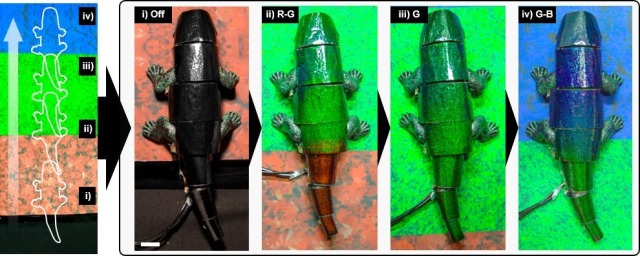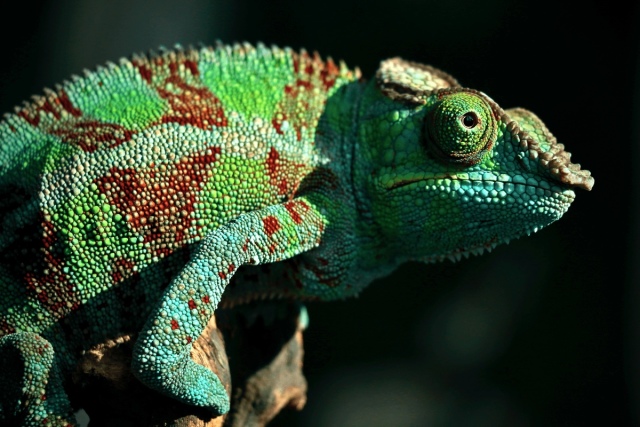South Korean engineers have developed a new and relatively inexpensive technology of active camouflage using heat-sensitive pigments.
Developers from South Korea demonstrated a prototype of a robot with active camouflage. It automatically and in" real time " takes on a color depending on the surface on which it moves, like a real chameleon. And although so far the system can be called only the first, primitive demonstrator of technology, in the future it may find wide application-primarily in military equipment.
Real live chameleons (and other natural masters of active camouflage) change their color by controlling the distribution of pigments in their skin cells. However [...], it is extremely difficult and expensive to repeat this effective mechanism in non-living systems. Therefore, Seung Hwan Ko and his colleagues from Seoul National University have found a simpler solution, which they write about in an article published in the journal Nature Communications.
©NPG Press
Instead of full-fledged video cameras, their robot uses simple color sensors. Their signal is transmitted to thin silver electrodes that go to the" shell " of the robot, covered with several layers containing heat-sensitive liquid crystals. Heating up, the electrodes cause them to change color, adapting to the color of the surface on which the robot moves. Due to the thoughtful distribution of pigments in the shell, you can even imitate the drawing on it.

©Seung Hwan Ko
The obvious problem of such a prototype remains its sensitivity to temperature. The demonstration shown in the video released by scientists takes place under room conditions. However, street heat or cold can affect the behavior of heat-sensitive pigments, and to counteract this, the system will probably have to be complicated.
Scientists hope that improving algorithms for managing pigments will help solve the problem. Perhaps artificial intelligence will allow you to adapt their behavior to different temperatures, as well as better simulate complex surface patterns.

